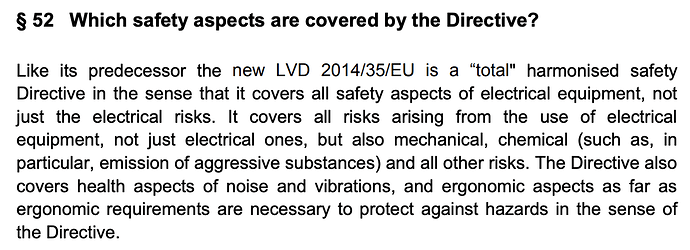The low voltage directive is the overall electrical safety legislation covering the requirements for any product placed on the market in the european union. The UK and the rest of the world have similar requirements…UK equivalent is the statutory instrument - electrical equipment safety regulations.
Its a catchall document with information explaining how to provide documented evidence that a product is electrically safe by design and testing. It details the evidence and marking required.
The easiest way to meet the requirements of the low voltage directive for a product is to create and maintain a technical file. The technical file comprises all of the pertinent information relating to the products design, construction electrical safety, electromagnetic compatibility and any other pertinent directives applicable like WEEE and RoHS.
As part of making the technical file up the product being documented will need testing. The testing is detailed by an appropriate standard.
There are generic catch all standards for electrical safety like EN 60335 - household and similar electrical appliances and there are more specific ones like en60601 - medical devices or en 61010 - measurement control and laboratory equipment.
For a multimedia device like a laptop, television, paper printer etc then en 62368 would probably apply.
How one arrives at the appropriate standards to apply unfortunately comes from experience and reading the scope of the standard.
It is the same for EMC standards or any other standard for that matter…there are guidance documents from the EU that assist - official journals and the ‘blue book’ and ‘red book’ etc.
There are also online publications like In Compliance magazine which run articles from time to time.
Rather than unhelpfully point you at these links and expect you to read digest and understand everything…give me an overall picture of the product you are trying to assess:
Is the device a television, music player, picture display or something similar - does it connect to the internet and is it mains powered?
If the device is all of the above then en 62368 could be applied…perform the appropriate tests in the standard, write a report stating the tests performed and how it passed those tests. Place the report in the technical file and move on to the next annoying compliance requirement 
As part of this you should really have the labelling and user manual ready for assessment.
If you are still struggling with all of this message me back and i will help you.
I found this article which might also provide some assistance:
https://www.cui.com/catalog/resource/iec-62368-1-an-introduction-to-the-new-safety-standard-for-ict-and-av-equipment
I used to do this for a living at one time although i was more focused on the EMC standards. Not to worry though…i did enough of both to be confident i can assist you.
Good luck - Alex
